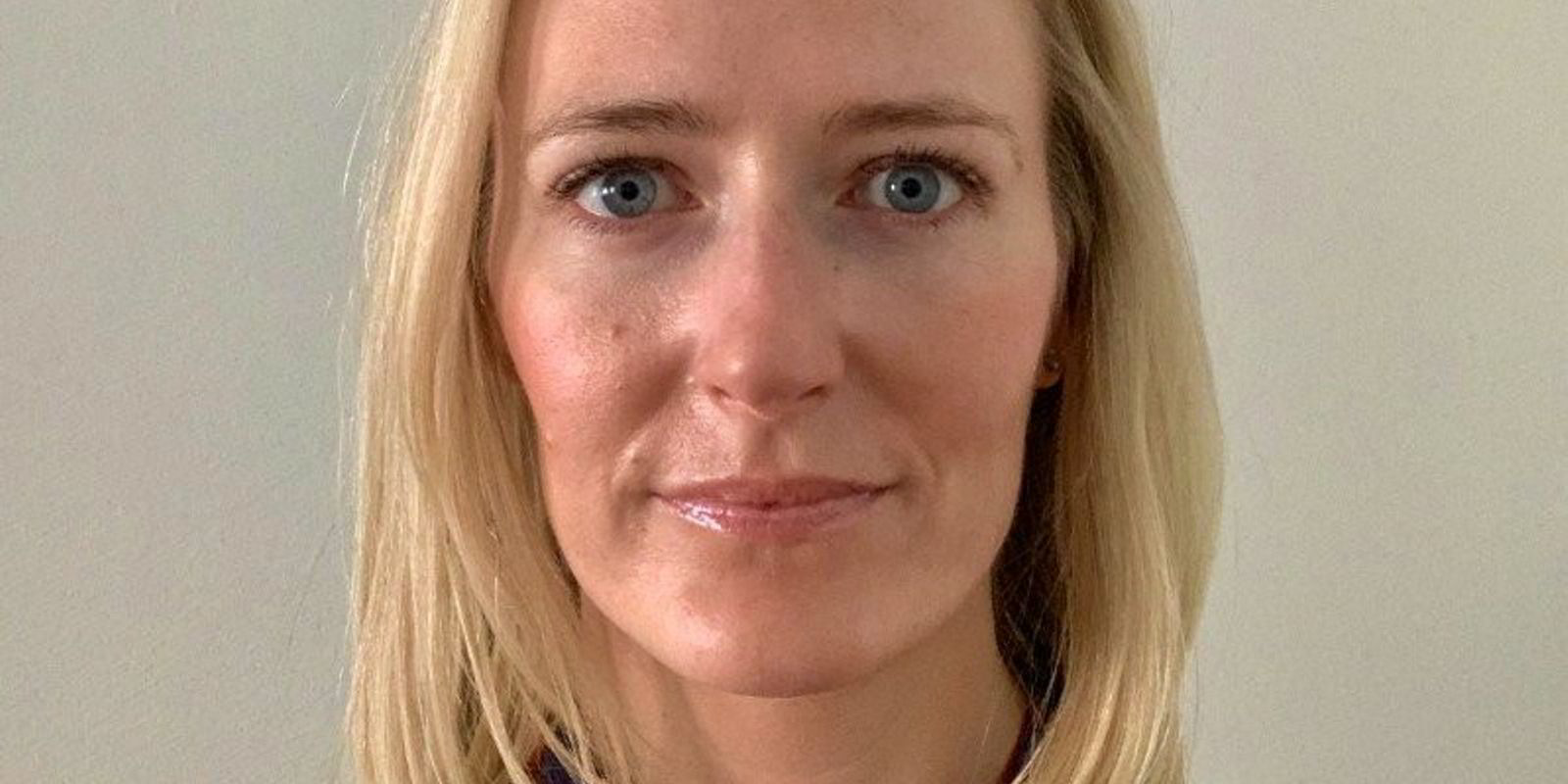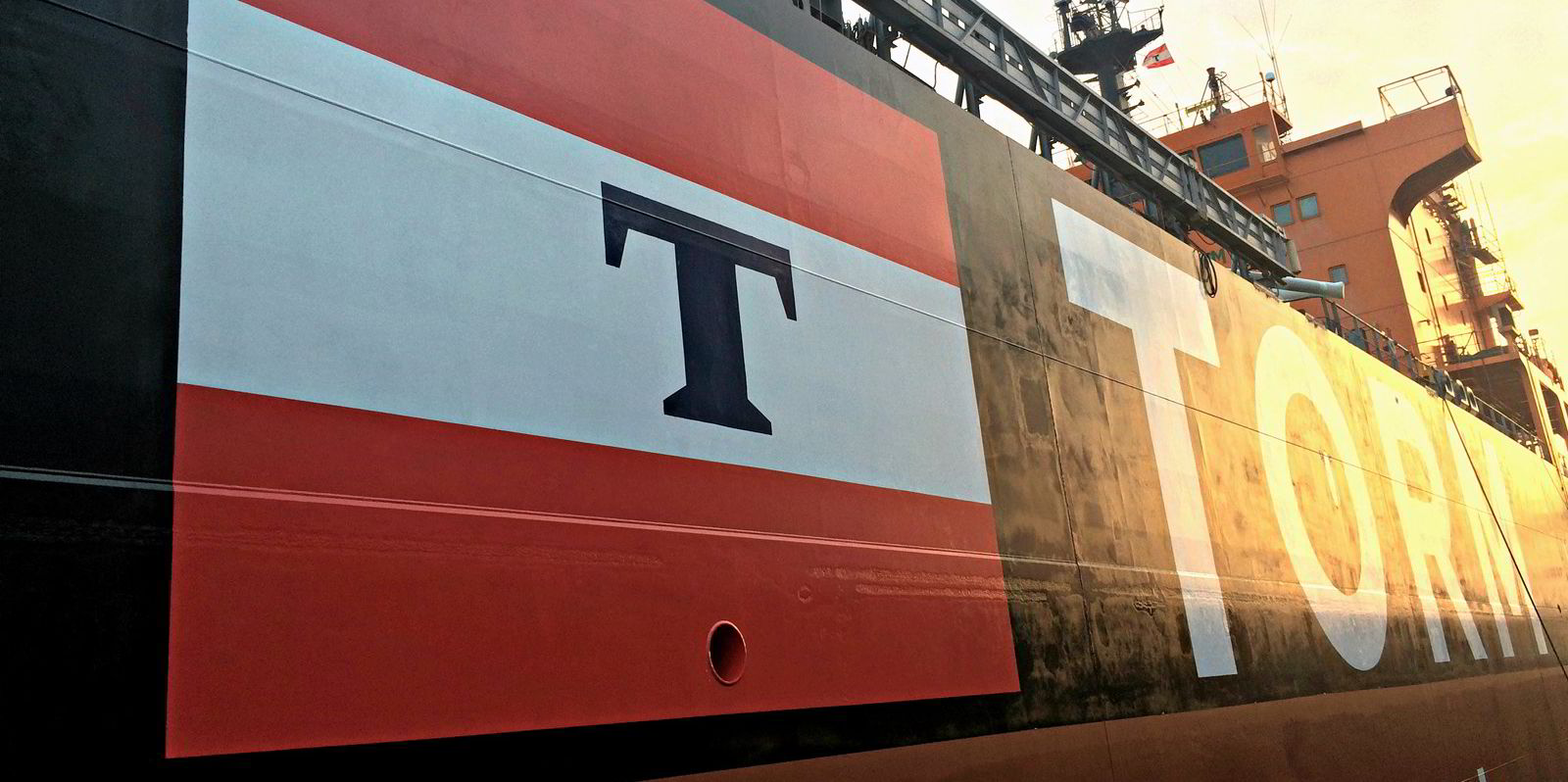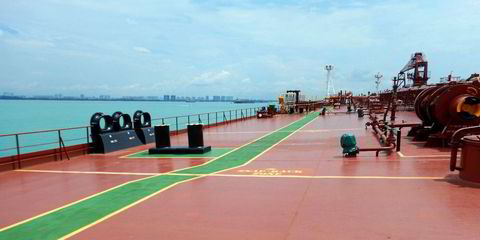Danish shipowner Torm is happy to keep using shares to fund vessel and fleet acquisitions.
The company has just revealed it is spending $399m in cash and stock on eight LR2 tankers built between 2010 and 2012, owned by Kristian Gerhard Jebsen Skipsrederi and Hayfin Capital.
Chief executive Jacob Meldgaard told TradeWinds this is the fourth such transaction using shares in the past couple of years.
“We have utilised our currency, our stock. And we are very pleased with that, that we’ve got a liquid stock that we can obviously use to the benefit of all shareholders,” the CEO said.
“It’s a very efficient way for us to grow the company. And these processes take time,” he added.
While not commenting on specific transactions, deals of this kind take months rather than weeks or days, Meldgaard continued.
Torm’s shares were up 4% at DKK 213.20 ($30.56) on Thursday. The price has risen 384% over the last five years.
“We want to be fair,” Meldgaard said. Deals are done based on the value of shares and the market value of ships, he explained.
“It’s not that complicated. I think we try to make it relatively easy on both sides. We are very comfortable with the way that we do it,” the CEO said.
Fleet growing in capacity
In 2023, Torm has increased the average deadweight capacity of the fleet by 10%, adding 22 ships and selling older, smaller ones, the CEO explained.
“We see that our capital needs in general are changing towards more of the long-haul trades,” he added.
“And [for] long-haul trades, everything else being equal, larger deadweight carrying capacity is preferred by our clients in the trades that we see in the coming years. So that’s a big thing for us,” Meldgaard told TradeWinds.
He describes the company as slowly building LR2 capacity to become the second-largest owner in the space with the latest deal.
“Of course, in response to our belief that we can do more, we have to be able to do more,” the CEO said.
The company’s third-quarter results statement revealed it has offloaded six older tankers since July.
Torm typically operates vessels until around 18 years on average, and then looks to sell.
“I think you should expect us to continue to do that,” the boss added.
“That also means that we do need to have some fleet renewal, and we don’t like to buy newbuilds because we don’t think that is a good risk-reward,” said Meldgaard.
“We think to have assets on the water now is, from our perspective, a much cleverer way to be exposed to the whims of the freight market,” he added.






